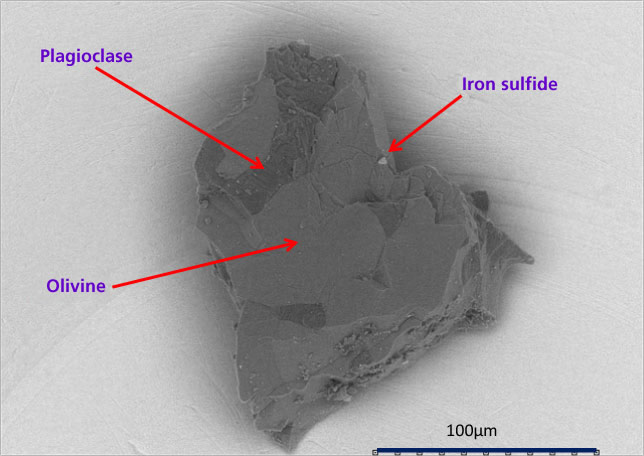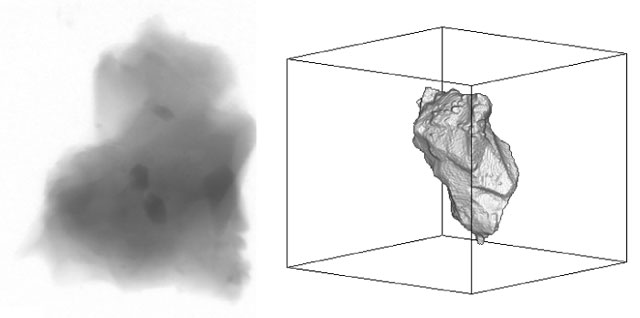Preliminary results of the initial analysis of
particles brought back by Hayabusa
Japan Aerospace Exploration Agency (JAXA)
The Japan Aerospace Exploration Agency (JAXA) has been engaged in collecting and categorizing particles in the sampler container (*1), which was brought back by the instrumental module of the asteroid exploration spacecraft "Hayabusa."
As a part of that, JAXA is conducting an initial analysis (*2) of the particles identified as rocky using the scanning electron microscope (SEM) observations among the particles collected from sample catcher compartment "A". We would like to announce that some of the results of the initial analysis were presented at the 42nd Lunar and Planetary Science Conference (LPSC) held in the USA. Please see the attachments for the brief summary.
*1 The Hayabusa sample container consists of 2 compartments that are called Sample Catcher A and B.
*2 "Initial analysis" means the analysis of typical particles to obtain information necessary for categorizing (identification, classification and numbering) as a part of curation activity (*3).
*3 "Curation activity" means the retrieval of particles, preservation, categorizing and allocation and their necessary analysis.
|
|
Attachment 1: Program of "SPECIAL SESSION: RESULTS FROM HAYABUSA!" in LPSC (PDF:167KB)
NOTE: April 4, 2023 Replaced with appropriate program
Attachment 2: Summary of the preliminary results of the initial analysis
The initial analysis of particles (about 50 grains) collected from the instrumental module of "Hayabusa", which commenced in late January, has revealed the following facts.
- According to results from the analyses of 3D tomography, major element compositions, and oxygen isotope ratios, material scientific properties of the particles (0.03 - 0.1 mm) identified as rocky are consistent with those of a specific kind of stony meteorite.
- The evidence of space weathering effects and the result from the noble gas analysis have revealed that the particles originated at the surface of Itokawa.
- There are several minerals in most rocky particles, and they have complex 3-dimensional textures (see the following image for an example).
- No organic matter has been identified so far.
Example of the rocky particle (image obtained by the Scanning Electron Microscope (SEM))

Example of the X-ray CT image (left) and the bird's eye view image (right) obtained at the synchrotron radiation facility SPring-8.
(Provided by Prof. Akira Tsuchiyama (Osaka Univ.))
